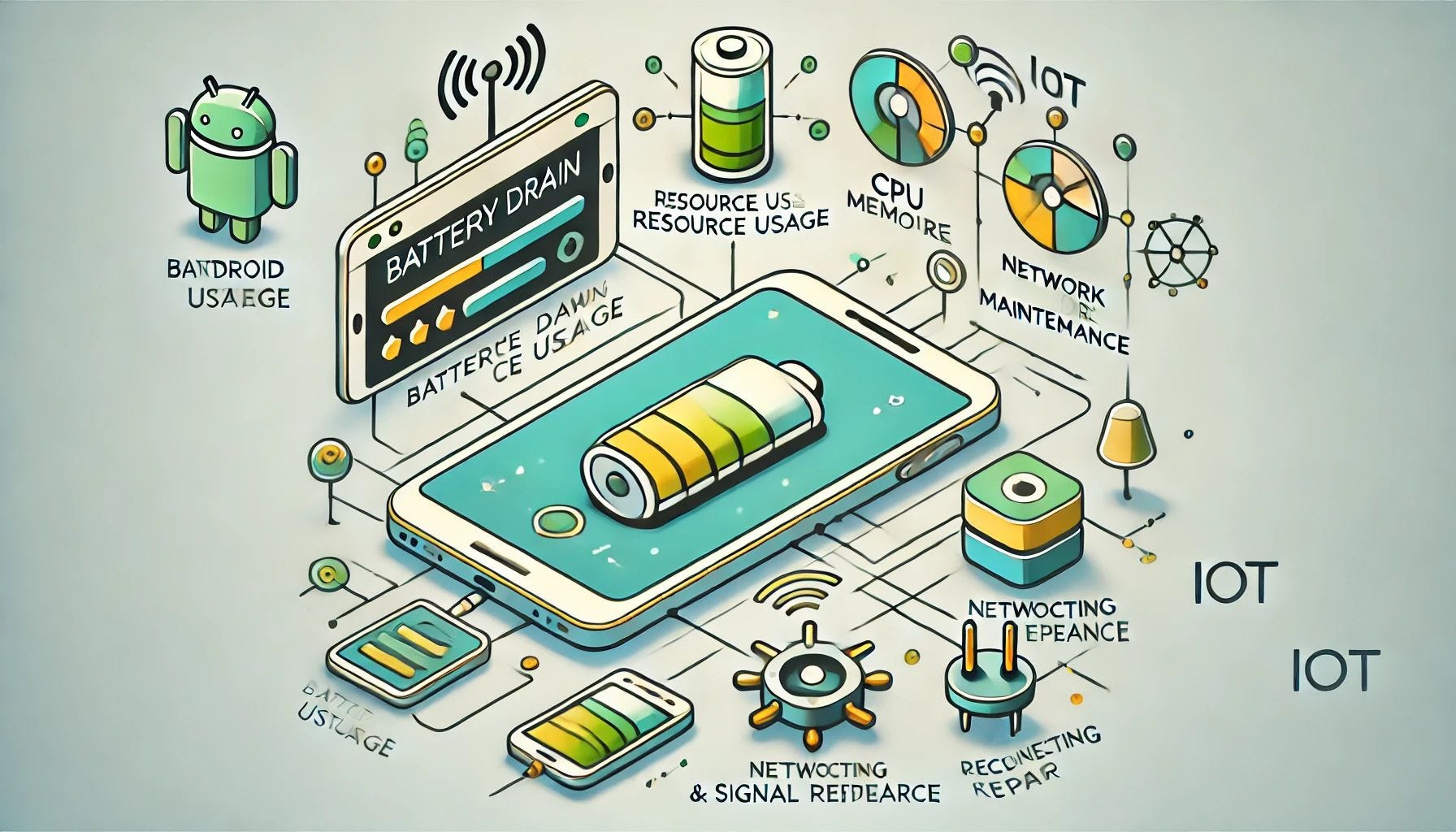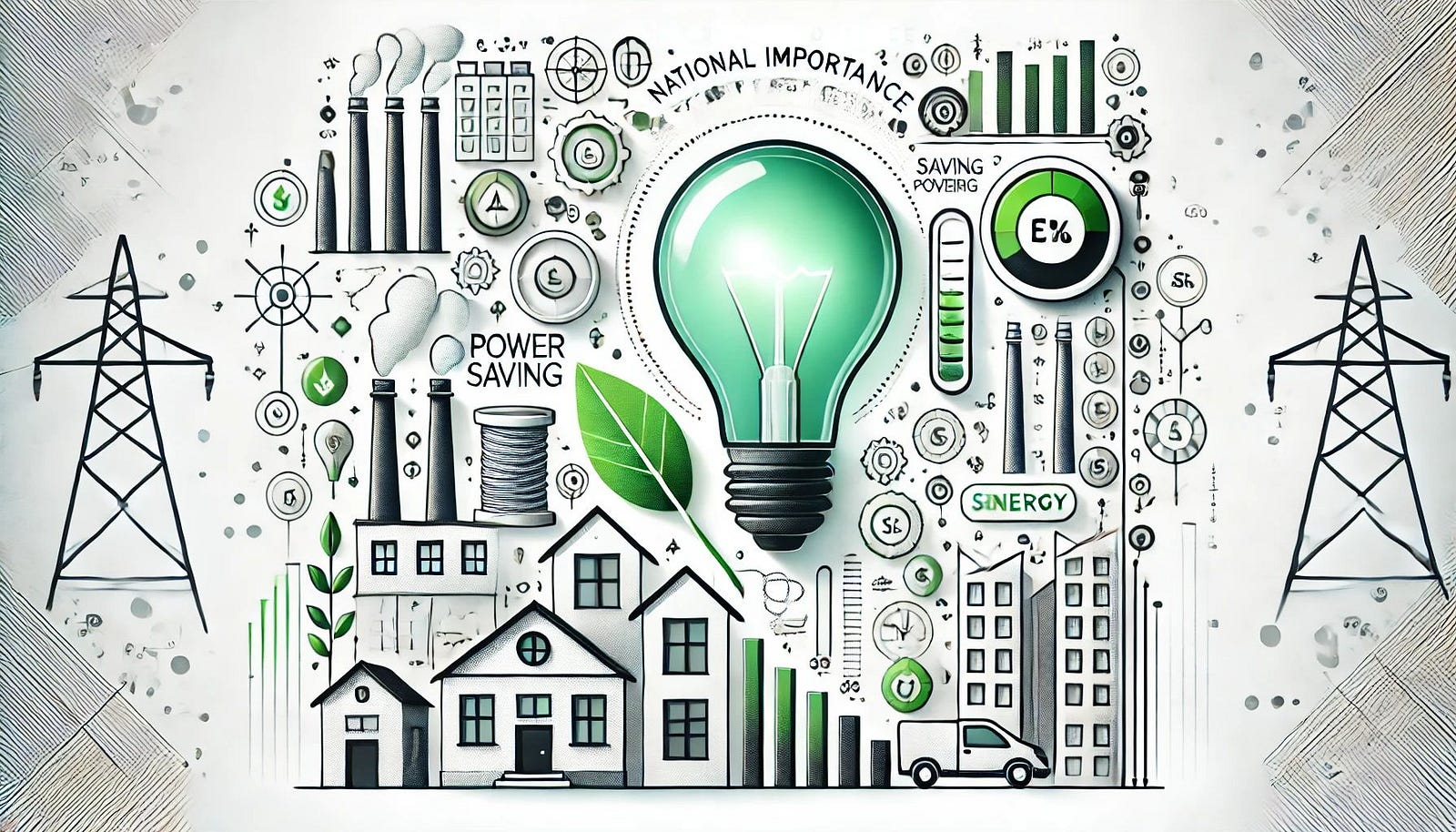
1. Introduction
Mesh networks play a vital role in IoT, connecting devices in decentralized systems. Android smartphones, as nodes or hubs in these networks, are resource-constrained due to limited battery life. This article focuses on practical strategies to reduce power consumption and optimize smartphone performance in mesh networks.
I implemented these strategies in a real-world scenario and successfully reduced smartphone power consumption by 30%, demonstrating their effectiveness in optimizing performance and extending battery life. These recommendations stem directly from my extensive experience working with Bluetooth and Wi-Fi protocols in mesh network environments.
2. Key Challenges
- Battery Drain: Continuous data transmission and radio usage quickly deplete power, particularly for smartphones running mesh network applications.
- Resource Usage: Routing, background processes, and data processing demand significant CPU and memory, limiting long-term operation.
- Network Maintenance: Keeping stable connectivity in mesh networks requires energy overhead for periodic communication and reconnection.
By leveraging my expertise in optimizing energy-efficient Bluetooth and Wi-Fi protocols, I identified these key challenges and developed strategies to address them, ensuring prolonged device operation without sacrificing network performance.
3. Strategies to Reduce Power Consumption

3.1 Use Energy-Efficient Protocols
- Bluetooth Low Energy (BLE): BLE is ideal for short-range communication due to its low power consumption compared to classic Bluetooth. For example, BLE Mesh networks can transmit small packets of sensor data (e.g., temperature or motion) at predefined intervals without excessive energy usage.
- Wi-Fi Direct Optimization: Use Wi-Fi Direct selectively when higher data transfer rates are needed, such as for video streams or large data packets. For instance, devices can switch to Wi-Fi Direct during periodic syncs but rely on BLE for low-energy, continuous updates.
- Hybrid Approaches: Combine BLE for signaling and Wi-Fi Direct for data transfer. A common approach is to send control messages via BLE and activate Wi-Fi only when necessary to send bulk data.
Example: A smart home system uses BLE to relay sensor states (on/off) while Wi-Fi Direct is triggered only when a firmware update is required, saving power overall.
3.2 Duty Cycling for Device Radios
- Scheduled Sleep-Wake Cycles: Reduce energy consumption by periodically turning off radio interfaces. Implement duty cycles where the radio wakes up only for short durations to transmit or receive data.
- BLE Advertising Interval Adjustment: Increase BLE advertising intervals (e.g., from 20ms to 500ms) when continuous connection is unnecessary.
- Wi-Fi Scanning Configuration: Configure Wi-Fi scan intervals to minimize energy overhead. Instead of scanning every minute, scan less frequently based on data demands.
Example: A mesh network for agricultural sensors uses BLE nodes configured to wake up every 10 minutes to transmit environmental data, extending smartphone battery life significantly.
3.3 Local Data Processing
- Edge Data Processing: Process raw data locally on the smartphone to reduce the frequency and size of transmissions over the network. This avoids sending redundant or unnecessary data.
- Data Compression: Compress data before sending it through the network to reduce transmission time and save energy.
- Data Filtering: Discard non-critical data at the source. For instance, a motion sensor can only send data when motion is detected rather than continuously streaming idle information.
Example: A smartphone acts as a central hub for fitness trackers. Instead of transmitting all sensor data to the cloud, it calculates averages or summaries locally and sends only the processed results, reducing energy consumption.
3.4 Optimize Routing Algorithms
- Energy-Aware Routing: Prioritize paths through nodes with higher battery levels to balance energy usage across the network. Algorithms like Dynamic Source Routing (DSR) can be adapted to factor in node battery status.
- Load Balancing: Distribute network tasks across multiple nodes evenly to prevent a single node from draining its resources quickly.
Example: In an Android-based mesh network for smart lights, nodes alternate as relays to ensure no single device depletes its battery too quickly.
3.5 Reduce Background Processes
- Minimize App Services: Remove or optimize unnecessary background processes that consume CPU and battery. For instance, disable logging services when not in use.
- Use Android Power Management Tools:
- Doze Mode: Defer non-essential tasks during idle periods.
- WorkManager: Schedule background tasks to run during low-power windows.
Example: A weather station app running on Android uses WorkManager to batch updates and sync data only when the smartphone is charging, significantly reducing battery drain.
4. Techniques for Resource Optimization
- Memory Optimization: Transmit lightweight, structured data (e.g., JSON instead of XML) to minimize memory usage and processing overhead.
- Adaptive Transmission Rates: Dynamically adjust data transmission frequency based on the network load and device battery level. For example, reduce data update intervals during low battery states.
- Error Reduction: Use Forward Error Correction (FEC) and acknowledgment-based protocols to minimize retransmissions, which consume unnecessary energy.
Example: A mesh network monitoring pipeline flow dynamically reduces reporting frequency from every 5 seconds to every minute when the battery level drops below 20%.
5. Tools for Power Profiling
- Battery Historian: Analyze how apps use power, identify energy-draining processes, and optimize their performance.
- Android Profiler: Monitor CPU, memory, and network usage to pinpoint resource bottlenecks and optimize app operations.
Example: By using Battery Historian, a developer identifies that frequent Wi-Fi scanning drains energy unnecessarily and adjusts the scan interval for better power efficiency.
6. Practical Application

By implementing these strategies, smartphones can act as low-power nodes in mesh networks:
- Example 1: In a BLE-based environmental monitoring network, increasing the sleep interval of the smartphone's radio reduces energy consumption by 40%, extending battery life by up to 8 hours.
- Example 2: A smart traffic management app processes vehicle speed data locally on the smartphone and only transmits summarized results to the cloud, reducing data transmissions by 50%.
- Example 3: Load balancing and energy-aware routing in a smart lighting system prevent early depletion of any single smartphone or node, ensuring stable long-term operation.
My Experience: By applying these recommendations, which are the outcomes of my experience with Bluetooth and Wi-Fi, I successfully reduced power consumption by 30% in a mesh network project. Using BLE for signaling, optimizing routing algorithms, and implementing sleep cycles allowed significant energy savings without sacrificing network performance.
National Importance of Power Saving
On a national scale, improving power efficiency in IoT mesh networks has significant implications. By minimizing smartphone power consumption, we can:
- Reduce Energy Demand: Lower overall electricity consumption, contributing to energy sustainability.
- Support Infrastructure: Enable stable and efficient network performance, particularly in rural and underserved areas.
- Enhance Disaster Preparedness: Power-efficient devices ensure prolonged communication in emergency mesh networks during power outages.
- Drive Cost Savings: Reduced energy consumption leads to financial savings for individuals and industries relying on IoT solutions.
These improvements collectively support national goals for energy conservation, environmental sustainability, and robust communication infrastructure.
7. Conclusion
Smartphones are central to IoT mesh networks, but power limitations require efficient strategies. By adopting energy-efficient protocols, optimizing radio usage, processing data locally, and using Android's power management tools, developers can significantly extend smartphone battery life and improve resource utilization in mesh networks.
Takeaway: Efficient protocol selection, optimized transmission, and leveraging Android's built-in power-saving features are key to minimizing smartphone power consumption while maintaining effective mesh network performance. My experience confirms that these strategies, built on practical insights from Bluetooth and Wi-Fi, can achieve up to 30% power savings, making them highly effective in real-world applications. On a larger scale, these advancements contribute to national energy conservation, sustainable infrastructure, and cost efficiency.
About the Author
Oleksandr Pliekhov is an experienced Android Developer with a strong background in Bluetooth, Wi-Fi, and mesh network technologies. Proven expertise in designing scalable architectures and leading teams to deliver high-quality solutions for complex projects.


